

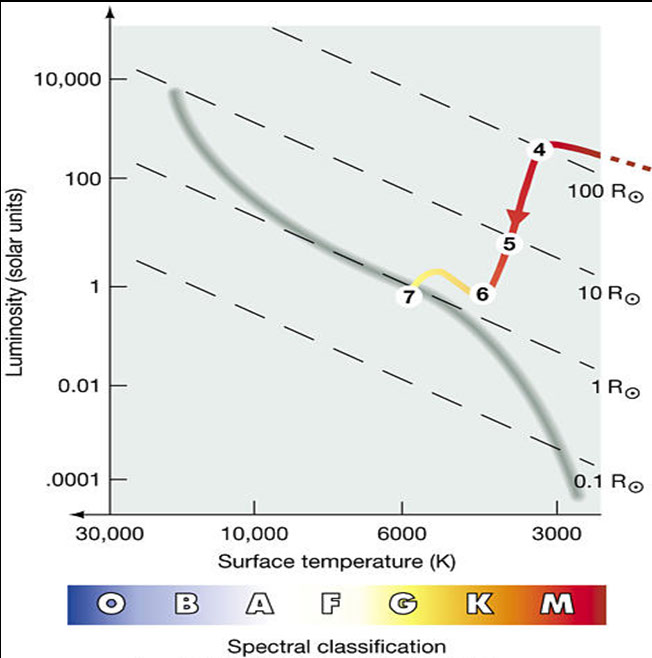
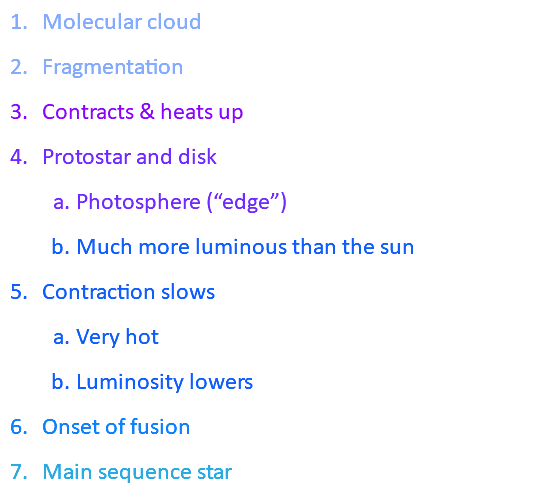

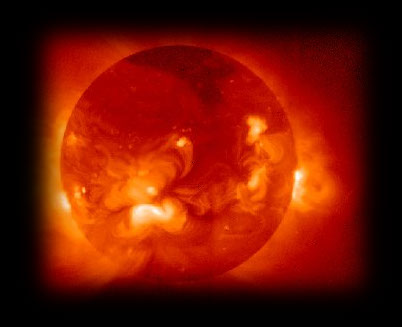
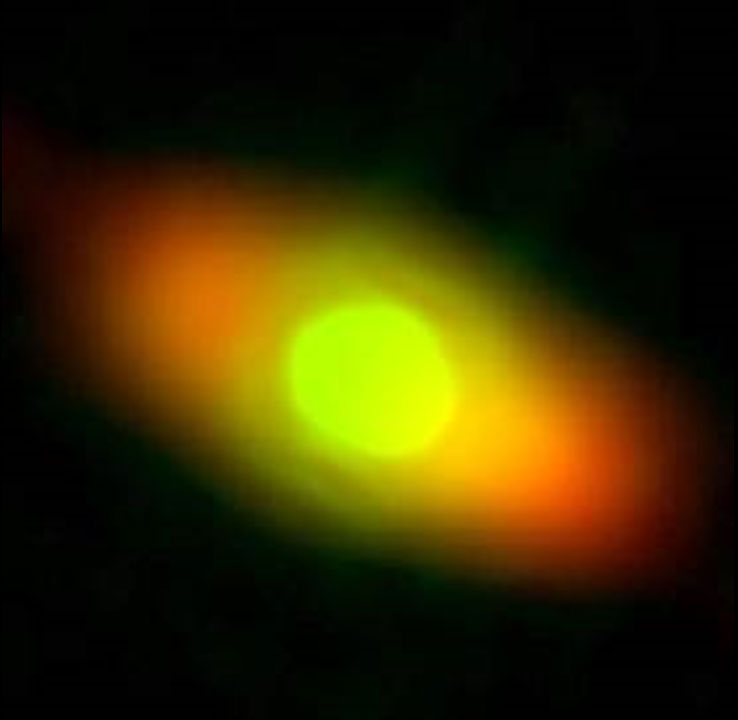
Fomalhaut (pronounced foh-ma-low, Arabic for “fish’s mouth”) is a very young star with disk of gas around it.
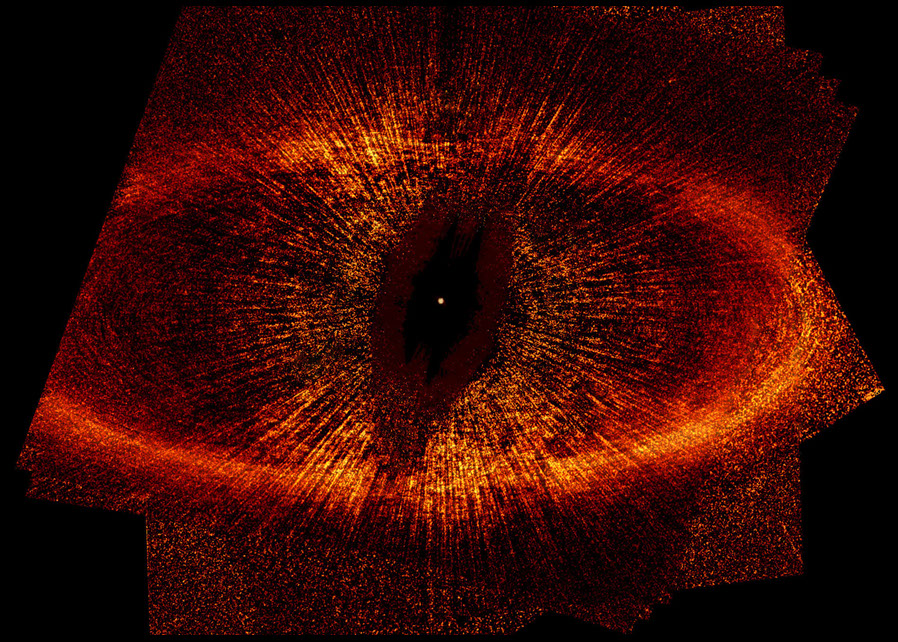
This image of Fomalhaut has the bright light in the inner region masked to show the star and structure of the protoplanetary disk. Careful measurements of the star and disk reveal that the star is not in the center of the disk. This indicates that there must be at least one massive planet in the disk.

High mass stars follow somewhat different evolutionary tracks as they evolve through their protostellar stages, eventually landing farther up along the main sequence. Note the difference in the amount of time necessary for a protostar to evolve into a main sequence star is very much shorter for a massive star compared to a low-mass star.
When a star evolves to the point where it lies on the main sequence, it is called a Zero Age Main Sequence star (ZAMS). Once it takes its place on the main sequence, it will stay in that place throughout most of its life. Stars do not evolve along the main sequence. In other words, a G type star will not evolve into an O type star.

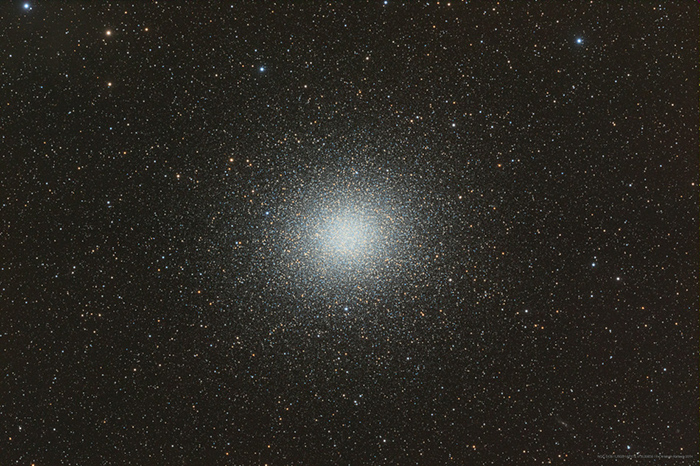
Omega Centauri is a globular cluster found in the halo of the Milky Way. It has about ten million stars and spans about 150 light years.

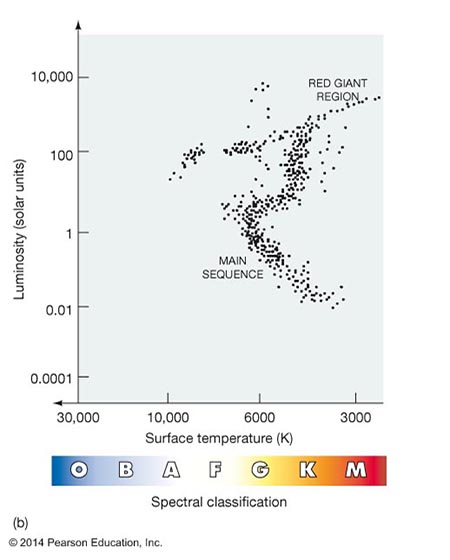
Globular clusters are roughly spherical groups of stars, typically containing hundreds of thousands to millions of stars. They are typically found in the halo of the galaxy. Globular clusters are useful for studying the evolution of populations of stars, since they have remained intact, without mixing with the stellar populations in the main part of the galaxy.
Open clusters are more loosely collected, and reside in the disk of the galaxy. The two diagrams above compare the HR diagrams of an open cluster (left) with a globular cluster (right). The open cluster has stars lying all along the main sequence.
The HR diagram for the globular cluster is quite different. It doesn't have any very massive stars on the upper left end of the main sequence. Any high-mass stars born in the globular cluster have already left the main sequence. There is a "peeling off" from the main sequence of stars moving to populate the upper right region of the HR diagram, where the red giants live. This shows the advancing age of the globular cluster, and is evidence that the stars in the cluster were all born at about the same time. The low-mass stars, which live much longer, still reside along the main sequence, while the high-mass stars, with shorter lifespans, have left it.

© 2005 Pearson Prentice Hall, Inc.
The above diagram plots the evolutionary track of a sunlike protostar in the Hertzsprung Russell diagram. As the young protostar contracts, it heats up. As the temperature rises, the pressure also rises. The rising temperature means the gas particles are moving faster, exerting more pressure. As the pressure gets higher, it makes it harder for the gravitational contraction to happen, and the contraction slows down. When the contraction slows down, the gas particles are not infalling as fast, so they are creating less light, and the luminosity decreases. Also, the central heat diffuses to the outer layer, where it is emitted outward into space, further cooling the protostar.
By stage 5 on the diagram, the protostar has shrunk to about ten times the size of the sun. The pressure is so high that the gravitational contraction has slowed down considerably. Notice that between stage 4 and stage 6, the temperature remains almost constant as the protostar collapses. Convection is the main form of energy transport, and contraction under gravity decreases luminosity.
At stage 6, the temperature in the core finally becomes high enough for fusion to begin. The surface temperature rises as radiation becomes the primary form of energy transfer. The rise in temperature causes the luminosity to increase slightly. The young star undergoes some adjustment as the fusion rate increases, and it and finally settles onto the main sequence, where it will spend most of its life.